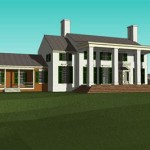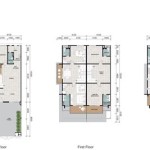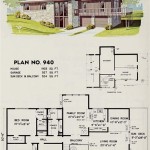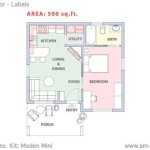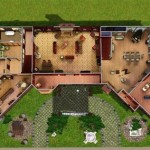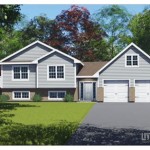How to Create a House Plan in AutoCAD 2017
AutoCAD 2017 remains a widely used computer-aided design (CAD) software for architectural drafting, including the creation of house plans. Its robust toolset and customizable environment allow for precise and efficient design workflow. This article provides a comprehensive guide on how to develop a house plan using AutoCAD 2017, outlining essential steps and techniques required for successful execution.
Before starting any drawing, it's crucial to establish preliminary preparations. These include setting up the drawing environment, understanding the project requirements, and gathering necessary information such as site dimensions, building codes, and client preferences. A clear understanding of these aspects will streamline the drafting process and minimize errors.
Setting Up the AutoCAD Environment
The initial step involves configuring AutoCAD 2017 to suit the specific requirements of architectural drafting. This encompasses setting the units, limits, and layers, ensuring a consistent and organized workspace.
Units: The unit of measurement should be set to either architectural units (feet and inches) or decimal units (meters or millimeters) depending on regional preferences and project specifications. This is achieved by typing "UNITS" in the command line, which opens the Drawing Units dialog box. Select the desired unit type and precision, ensuring consistency throughout the drawing.
Limits: Setting the drawing limits defines the working area within which the house plan will be drawn. While not strictly necessary in AutoCAD’s model space (which is theoretically infinite), defining limits can be helpful for visualization and plotting purposes. Type "LIMITS" in the command line and specify the lower-left and upper-right corners of the desired drawing area. This area should be large enough to accommodate the entire house plan without being excessively large, which can impact performance.
Layers: Layers are essential for organizing and controlling the different elements of the house plan. Create layers for walls, doors, windows, furniture, dimensions, text, and other relevant components. Assign each layer a specific color, linetype, and lineweight. This allows for easy identification, selection, and manipulation of objects within the drawing. The Layer Properties Manager, accessible by typing "LAYER" in the command line, allows for the creation, renaming, and modification of layers. Using standard layer names and conventions ensures consistency and facilitates collaboration.
For example, a layer named "A-WALL" could be assigned the color red, a continuous linetype, and a lineweight of 0.30mm. Another layer named "A-DOOR" could be assigned the color blue, a continuous linetype, and a lineweight of 0.18mm. Consistent application of these properties ensures a clear visual hierarchy and improves the readability of the drawing.
Drafting the Basic Floor Plan
With the environment configured, the next step involves drafting the fundamental outline of the house plan, including the exterior and interior walls.
Exterior Walls: The "LINE" command is the primary tool for drawing walls. Start by defining the outer perimeter of the house based on the site dimensions and desired layout. Input the coordinates or use the Ortho mode (F8) to ensure perfectly horizontal and vertical lines. Specify the wall thickness according to the architectural requirements, typically ranging from 4 inches to 12 inches depending on the construction type and local building codes. The "OFFSET" command can be used to create parallel lines representing the inner and outer faces of the exterior walls. Input the wall thickness as the offset distance and select the line to offset.
Interior Walls: Once the exterior walls are established, proceed with drawing the interior walls, defining the layout of rooms and spaces. Consider the functional requirements of each room and the desired circulation patterns. Use the "TRIM" command to clean up intersections where walls meet, creating a seamless and accurate representation of the floor plan. The "EXTEND" command is useful for extending walls to meet other walls or boundaries.
Object Snaps: Object snaps (OSNAPS) are crucial for precise drawing. They allow you to snap to specific points on existing objects, such as endpoints, midpoints, centers, and intersections. Ensure that relevant OSNAPS are enabled in the Drafting Settings dialog box (accessible by typing "DSETTINGS" in the command line or right-clicking on the OSNAP icon in the status bar). Common OSNAPS include Endpoint, Midpoint, Center, Intersection, and Perpendicular. Using OSNAPS ensures that walls, doors, and other objects are accurately aligned and connected.
For example, when drawing an interior wall that needs to connect to an existing exterior wall, use the Endpoint OSNAP to snap to the endpoint of the exterior wall. This ensures that the two walls are perfectly aligned, preventing gaps or overlaps.
Adding Architectural Details and Annotations
After establishing the basic wall layout, the next phase involves adding architectural details such as doors, windows, stairs, and fixtures, and annotating the drawing with dimensions, text, and symbols.
Doors and Windows: Doors and windows are typically represented using standard symbols and conventions. These can be created using lines, arcs, and other drawing tools, or imported from a library of pre-drawn blocks. The "INSERT" command allows for the insertion of blocks into the drawing. Ensure that doors and windows are placed according to proper dimensions and clearances, considering accessibility requirements and furniture placement. The "MIRROR" command can be used to create symmetrical doors and windows.
Stairs: Stairs are complex elements that require careful planning and execution. Accurately represent the rise, run, and overall dimensions of the staircase, complying with building codes and safety regulations. Use the "OFFSET" command to create the treads and risers, and the "ARRAY" command to create multiple copies of the steps. Consider the headroom and handrail requirements when designing the staircase.
Fixtures and Furniture: Add fixtures such as toilets, sinks, showers, and bathtubs to bathrooms, and cabinets, appliances, and countertops to kitchens. Include furniture such as beds, sofas, tables, and chairs to indicate the intended use of each room. These elements can be represented using simple shapes or more detailed blocks. The furniture layout should be planned strategically to optimize space utilization and circulation.
Dimensions: Dimensions are essential for conveying the size and proportions of the house plan. Use the "DIMLINEAR," "DIMALIGNED," and "DIMANGULAR" commands to create linear, aligned, and angular dimensions, respectively. Customize the dimension style (accessible by typing "DIMSTYLE" in the command line) to control the appearance of the dimensions, including the text size, arrow size, and precision. Place dimensions strategically to clearly indicate the overall dimensions of the building, the dimensions of rooms, and the locations of doors and windows.
Text and Annotations: Add text to label rooms, identify materials, and provide other relevant information. Use the "TEXT" or "MTEXT" commands to create single-line or multi-line text, respectively. Adjust the text height and font style to ensure readability. Add annotations such as notes and symbols to further clarify the design and construction details.
Hatching: Hatching is used to represent materials and surfaces in the drawing. Use the "HATCH" command to fill areas with patterns such as brick, concrete, or wood. Select the appropriate hatch pattern and scale to accurately represent the material. Hatching can also be used to indicate different zones or areas within the house plan.
For instance, to hatch a concrete wall, select the "ANSI31" hatch pattern and adjust the scale to achieve the desired density. Hatching the wall clearly identifies it as a concrete element.
Throughout the drafting process, it is imperative to save the drawing frequently to prevent data loss. AutoCAD provides options for automatic saving, which can be configured in the Options dialog box (accessible by typing "OPTIONS" in the command line). Regularly backing up the drawing files is also crucial for safeguarding against unforeseen issues.
Reviewing the drawing periodically is essential to identify and correct any errors or inconsistencies. Comparing the drawing to the original specifications and design intent ensures that the final house plan accurately reflects the project requirements. Seeking feedback from colleagues or supervisors can provide valuable insights and improve the overall quality of the drawing.

Autocad 2024 Making A Simple Floor Plan In Part 1 Of 3 2d Drawing 2025

Autocad 2024 Basic 2d Floor Plan For Beginner Complete

Autocad 2024 Basic 2d Floor Plan For Beginner Complete

How To Draw Floor Plans In Autocad Edrawmax

Autocad 2024 Making A Simple Floor Plan In Part 1 Of 3 2d Drawing 2025

Basic Floor Plan Drafting In Autocad 7 Steps Instructables

Autocad 2024 Basic 2d Floor Plan For Beginner Complete

Autocad Floor Plan Tutorial For Beginners 6

How To Draw Floor Plans In Autocad Edrawmax

Floor Plan Tools For 2d 3d Plans Autodesk

